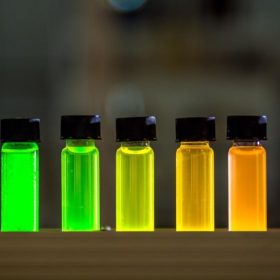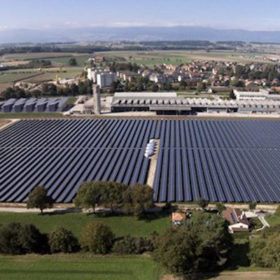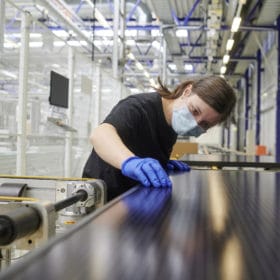Switzerland plans winter bonus for PV systems with a tilt angle of at least 75 degrees
The Swiss Federal Council has the task of standardizing the incentives for renewable energy and has now started the related parliamentary process. A winter bonus for photovoltaic systems may be introduced in the future.
Solar caravan powering the electric vehicle that tows it
The solar modules for the solar array were supplied by Chinese manufacturer Longi, which is a major partner in the project.
Swiss manufacturer unveils 500W solar module with 23.2% efficiency
Megasol said the solar module relies on new back-contact technology that is able to reduce internal resistance, ohmic losses and cell spacing.
Alpiq plans 18MW vertical bifacial PV plant in the Swiss Alps
The Gondosolar project will be built at an altitude of over 2,000m and is expected to produce around 23.3 million kWh of electricity per year.
Quantum dot layer pushes perovskite solar cell efficiency up to 25.7%
Researchers in Switzerland have replaced the electron transport layers in perovskite solar cells with a thin layer of quantum dots. On an area of 0.08cm2, they achieved a record efficiency of 25.7% and high operational stability.
Switzerland’s largest solar park planned to power refinery
The PV facility will have a capacity of 7.7MW and will rely on 19,000 of the latest generation solar modules from the Swiss Center for Electronics and Microtechnology (CSEM).
Korea Zinc invests in gravity storage developer Energy Vault
Korea Zinc, non-ferrous metal smelting company, has agreed to invest $50 million in Energy Vault, a Switzerland-based gravity storage specialist, in order to use its tech to decarbonize its refining and smelting operations in Australia.
Covid-19 forces Meyer Burger to reduce solar module output, increase panel prices for 2022
An above-average employee sickness absence is forcing the Switzerland-based solar panel manufacturer to slow down production until the end of January. Meyer Burger has also informed customers that the prices for its solar modules will rise in the coming year.
Germany will continue to dominate European home battery market – no matter who is in government
Industry association SolarPower Europe expects little change in the line-up of Europe’s biggest residential battery markets in four years’ time, with a rush of retrofits as turn-of-the-century solar feed-in tariffs begin to expire, set to keep Germany way ahead of the pack.
The solar facade with a golden glow
A 163 kW solar façade is powering the new building of Basel’s Office for Environment and Energy in Switzerland. Swiss manufacturer Megasol provided special modules on 3D fused glass for the vertical BIPV installation.










